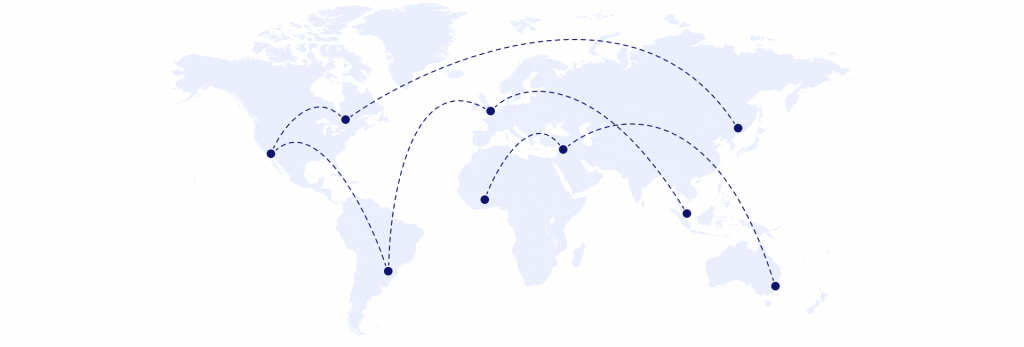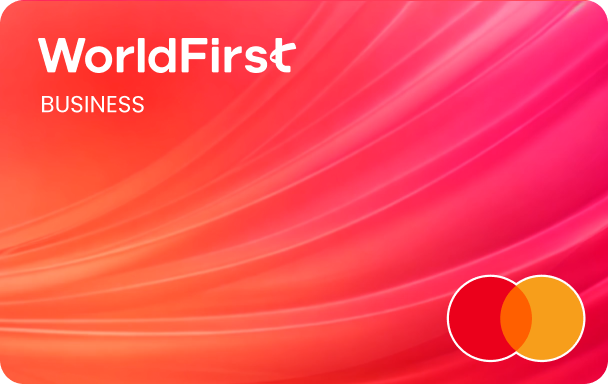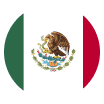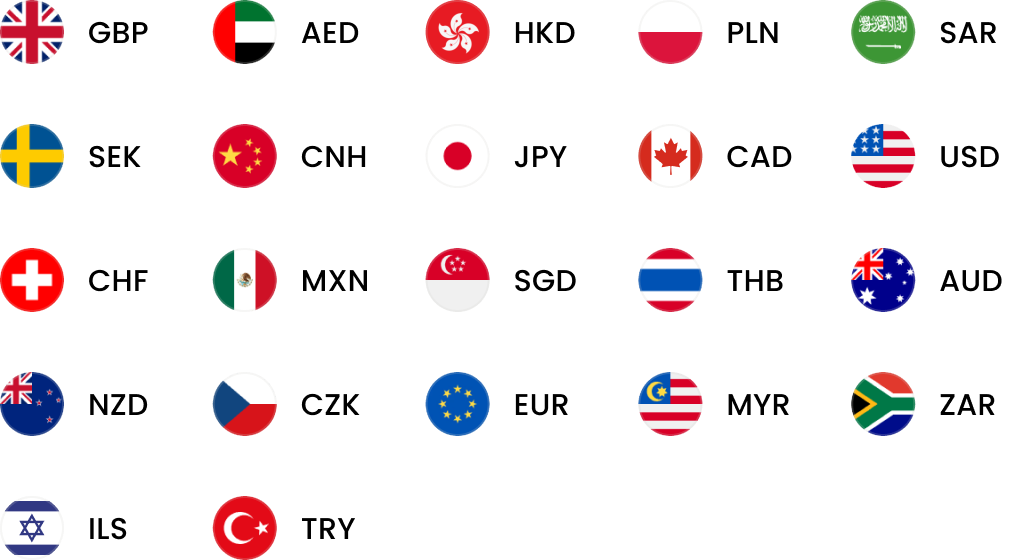Breaking into new markets: pandemic pivots in 2020 and 2021
The COVID-19 pandemic caused global turmoil and led to business closures all over the world. Some companies did well in the midst of the crisis, however. Read about five pandemic pivots below.
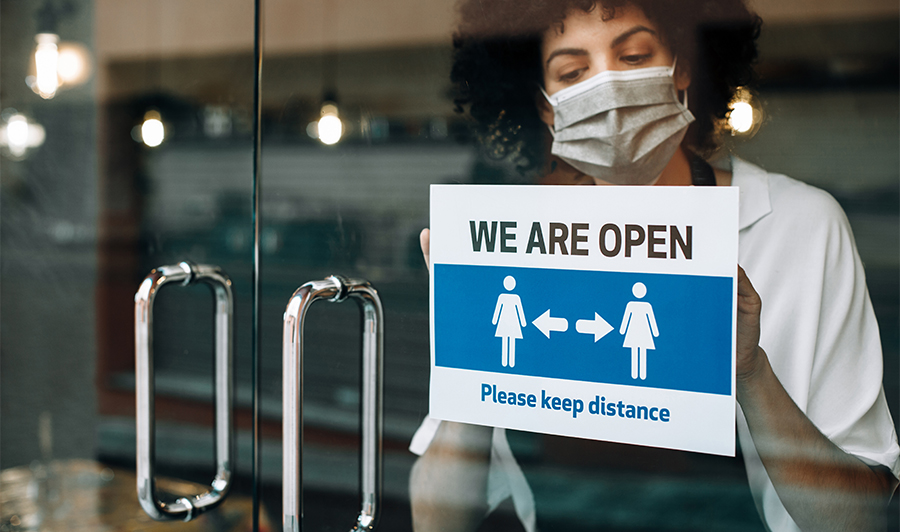
The coronavirus pandemic made 2020 and 2021 very difficult for businesses all over the planet. Shops shut their doors for months at a time, in spring — and later, summer — stock went unsold and regional economies tumbled. Container freight rates increased exponentially, and as countries closed borders, international expansion strategies went entirely out of the window.
Still, savvy entrepreneurs found clever ways to overcome challenges as the pandemic wore on. Some businesses survived the COVID-19 fray by breaking into new domestic markets; others completely changed their product lineups. In this article, we’ll review five organisations that beat the odds in 2020 and 2021 — and we’ll explore what made them successful.
- 2021: another challenging year for businesses
- Breaking into new markets: five pivot pros
- How to break into a new market
- WorldFirst case studies
2021: another challenging year for businesses
Way back in November 2019, The Economist published its annual report on predicted economic and social trends around the world. Stuffed with features, ‘The World in 2020’ included headlines like ‘Germany’s last hurrah in a changing world’, ‘After Brexit, an economic fork in the road’ and ‘A crunch year ahead for Indian businesses.’
Airlines, the magazine said, would have to reduce emissions in line with the International Civil Aviation Organisation’s (ICAO) Carbon Offsetting and Reduction Scheme for International Aviation (CORSIA) initiative. Migrants would continue to leave Latin American countries like Venezuela; meanwhile, Brazil’s economy might finally rebound.
In the end, a tiny coronavirus turned all of those predictions inside out. Airlines were partially or fully grounded for months; Latin America — particularly Brazil — ended up in the grips of a pandemic run amok. Germany’s economy, incidentally, shrank only 5% in 2020: significantly less than economies in Italy and France (8.8% and 8.3% respectively) and the UK (9.9%).
Pandemic-related difficulties continued into 2021. Businesses without strong online presences — and ventures stoically committed to one product or target market — followed Sir Philip Green’s Arcadia Group into insolvency. According to research conducted by Simply Business, the pandemic cost small businesses in the UK about £126.6 billion — more than double what they’d estimated at the start of the crisis.
A proportion of companies in the UK and worldwide continued to flourish — or even expanded during the pandemic. On the whole, they achieved success by pivoting: they noted changing consumer demand and offered different products or services accordingly. Because of international restrictions, many of these ‘pandemic winners’ expanded into new domestic markets; however, they often formed new relationships with overseas suppliers in the process.
Breaking into new markets: five pivot pros
Pivoting requires flexibility and a good sense of balance. That applies especially in business, where agility can help you adapt to marketplace trends, crises and everything in between. For example, businesses that changed tack in response to the coronavirus pandemic survived the economic effects of the crisis in greater numbers. Let’s look at how five ‘pivot pros’ got through 2020 and 2021.
Pivot pro 1: Barbour
Barbour is no stranger to crises. Founded in 1894, the company pivoted to produce military garments at its factories during both WW1 and WW2. In 2020, Barbour converted its South Shields factory into a disposable gown production line, supplying local North East NHS Trusts with much-needed PPE.
Its initial venture with the Royal Victoria Infirmary in Newcastle proved so successful that Barbour got a contract to make gowns and scrubs on a larger scale. In total, Barbour made 40,000 disposable gowns and 2,000 masks. The company also used its existing global supply lines to source 20,000 masks for NHS staff.
Despite ‘significant’ pandemic-related impact to its business, including lower revenue year on year, Barbour’s long-term prospects remain strong — in part because of the company’s tactical investment strategy. Future initiatives for Barbour include increased investment in technology and sustainability.
Pivot pro 2: LVMH
Luxury multinational LVMH Moët Hennessy Louis Vuitton, commonly known as LVMH, turned its perfume factories into hand sanitiser factories during the pandemic. After an initial slump in first-quarter sales — and following an urgent call for supplies from the French government — LVMH chief executive Bernard Arnault authorised the Orléans factory conversion via text message on a Saturday night.
After Arnault’s initial go-ahead, the factory production line switched from perfume to plastic bottles filled with potent hand sanitiser, the first of which emerged on Monday, March 16th 2020. By the end of the week, LVMH had donated more than 12 tonnes of hand sanitiser to Paris’ public hospital system.
LVMH’s answer to the French government’s call for help wasn’t motivated by a desire for profit. The company did, however, gain a humanitarian reputation for its work during the pandemic which helped improve its corporate image. Sales improved in the fourth quarter of 2020, and in the end, the organisation’s revenue only fell 17% below 2019 levels. In the first half of 2021, LVMH revenue increased by an impressive 56% over the same period in 2020.
Pivot pro 3: Sofa.com
When the first lockdown happened, the quick-thinking pros behind leading Fraser Group-owned Sofa.com predicted that consumers would spend a lot more time in their gardens. Acting swiftly, they added a range of showerproof outdoor chairs, sofas and tables within weeks of the pandemic’s arrival in the UK.
The firm’s partnership with Market Harborough-based Garden Trading led to the development of its popular Outdoor Living Collection, which became a permanent fixture in the firm’s furniture lineup in 2020 and 2021. Sofa.com’s decision to ‘go outside’ in 2020, so to speak, reflected a wider trend toward outdoor living during the pandemic. That trend continued in 2021 when seed companies reported sales similar to those they’d seen the previous year.
Sofa.com had a favourable Trustpilot rating and delivered promising year-on-year growth before the pandemic. Its shrewd strategy during the crisis makes the company a definitive pandemic success story.
Pivot pro 4: Jaguar Land Rover
Jaguar Land Rover bolstered its international image during the pandemic by deploying a global fleet of emergency services vehicles right at the beginning of the crisis. By the end of March 2020 more than 160 Jaguar and Land Rover vehicles had been loaned to first responders all over the world, including Red Cross teams in Australia, South Africa, France, Spain and the UK.
The British Red Cross used Land Rover Defenders to deliver food, medicines and other essentials to vulnerable communities all over the country. Awareness of the vehicle’s capabilities increased, and demand for the Defender rose sharply in the fourth quarter of 2020; overall, the company’s Q4 retail sales results were better than expected. In spring 2021, Jaguar Land Rover reported positive cash flow for fiscal year 2020/2021, despite the effects of the pandemic.
Jaguar Land Rover’s COVID-19 pivot put it in the global spotlight, and helped to strengthen the corporation’s humanitarian reputation. In 2021, accolades for the Land Rover Defender included Best Medium SUV of 2021 and Best Car of the Year at the Women’s World Car of the Year (WWCOTY) 2021 awards.
Pivot pro 5: Burberry
When the pandemic struck, Burberry was among the first UK retailers to open its supply chain to the NHS. First, the company used its existing global suppliers to source 100,000 masks for NHS personnel. Then, it turned its Yorkshire-based trenchcoat factory into a pop-up production line for non-surgical gowns and masks for hospital patients. In the end, Burberry won a lucrative £573,000 NHS PPE production contract.
Burberry’s response to the pandemic caused a shift in its brand values. Long known as a luxury fashion house, the company focused on philanthropy, transparent ethics and the customer experience in 2020 and 2021. Its executive directors agreed to a 20% pay cut, and it rejected the UK government’s furlough program in favour of a fully funded in-house staff retention scheme. Not a profit-focused pivot, but a pivot nonetheless.
In 2021, Burberry’s revenue rebounded to pre-pandemic levels. Strong sales in Asia and America drove the company’s recovery while sales in Europe remained suppressed in the second quarter. After its contract with the NHS ended, Burberry continued making masks for its retail customers, offering them for sale online as well as in store.
- Open 20+ local currency accounts and get paid like a local
- Pay suppliers, partners and staff worldwide in 100+ currencies
- Collect payments for free from 130+ marketplaces and payment gateways, including Amazon, Etsy, PayPal and Shopify
- Save with competitive exchange rates on currency conversions and transfers
- Lock in exchange rates for up to 24 months for cash flow certainty
How to break into a new market
The pandemic created logistical challenges for companies looking to expand into international markets. Some country borders were closed — New Zealand, for instance — and container shipping charges increased because of capacity management problems, changing trade patterns and pandemic-related delays.
Some companies whose expansion plans were delayed by COVID-19 see 2022 as a new opportunity for growth. Let’s look at what it takes to break into a new domestic market, and what you’ll need to consider before taking your venture global.
Breaking into a new domestic market
You can’t break into a new domestic market without knowing where you are now. Robust expansion strategies begin with a SWOT analysis. A SWOT analysis — which stands for strengths, weaknesses, opportunities and threats — can help you assess your company’s current status.
- Strengths: What are the things your company does well? What are the things that make your organisation unique?
- Weaknesses: Are there procedures or products you’d like to improve, and if so, how? What would your competitors see as your weaknesses?
- Opportunities: Which marketplace opportunities and trends can you take advantage of right now? How will your strengths help you succeed?
Threats: What risks will you face in a new marketplace? How do your competitors handle those risks?
With your SWOT analysis complete, you can move into planning mode. You can use the following five-step process to create a nimble expansion strategy:
- Define your business: Think about the problem your business solves, and what your unique value proposition is. How will what you do now translate into your new marketplace? Write down a few short-term and long-term goals for your venture.
- Perform market research: Try to find out what your target consumers want, how much they’ll pay for your product, and how quickly they expect to receive it. Use surveys, third-party data and consumer interviews to inform yourself.
- Segment your markets: If you plan to break into several new markets at once, perform secondary market research on each one. Which markets are more accessible? Which might be harder to break into?
- Carry out a competitive analysis: Dive into what your competitors do, and why. What makes the products or services they offer unique? How does your company, and your offering, compare?
- Launch and refine your strategy: After you go live in your new market, keep an eye on key performance indicators (KPIs) like conversion rate, customer loyalty and net revenue to assess your success. Make changes quickly in line with the data you see.
Breaking into a new international market
If you’re a successful UK-based business, it can make business sense to expand into foreign markets as well. Established markets like Singapore and Hong Kong, and emerging markets like Latin America and China represent real opportunities for growth.
You can base the first part of your international expansion strategy on your domestic market expansion strategy. The second part, however, will focus on export-specific challenges, or on setting up a physical or web-based presence in your destination marketplace.
Don’t forget to consider:
- What the infrastructure in your foreign market looks like, and whether you’ll need to tackle infrastructure-related logistics challenges
- The import, export and quality-centric rules and regulations in your target region
- The physical storage space, or warehousing space you might need in the new country
- Whether you’ll use container shipping or air freight to acquire and distribute wholesale products
- The barriers to entry in your new markets, and whether one market has a lower barrier than another
WorldFirst case studies
Need a little real-world inspiration? Look no further than these WorldFirst case studies, which prove first hand how effective pivoting in times of crisis can be:
- Home Fusion: A WorldFirst client since 2015, Home Fusion used the platform to expand successfully into New Zealand. In the future, the company also plans to begin trading in Sweden.
- Argofield: International home decor company Argofield trades mainly in EU nations like France, Germany, Italy and Spain — but it also works with customers in the US, Australia and New Zealand. In the future, Argofield plans to use its close relationship with WorldFirst to expand into Poland.
- Glamour Empire: With a WorldFirst account, fashion boutique Glamour Empire does business in France, Germany, Italy, the Netherlands, Poland and Spain. Its core customer base remains the UK, but its international presence is growing — particularly in Germany.
Make international transactions easier with WorldFirst
If you’re considering a pivot of your own in 2022 — or if you plan to break into a new domestic or international market — you might need to change your financial processes to match your new trajectory. Payments to suppliers and manufacturers in China, for instance, can be tricky without the right currency transfer partner at your side.
With an account from WorldFirst, you’ll benefit from speedy same-day transfers to China and bulk rate options that save you money. To find out more about WorldFirst products and services, call 0207 8011065 today.


The opportunities in Malaysia when expanding your business globally
Explore business opportunities and manage costs effectively in Malaysia with this guide for European businesses.
Dec / 2024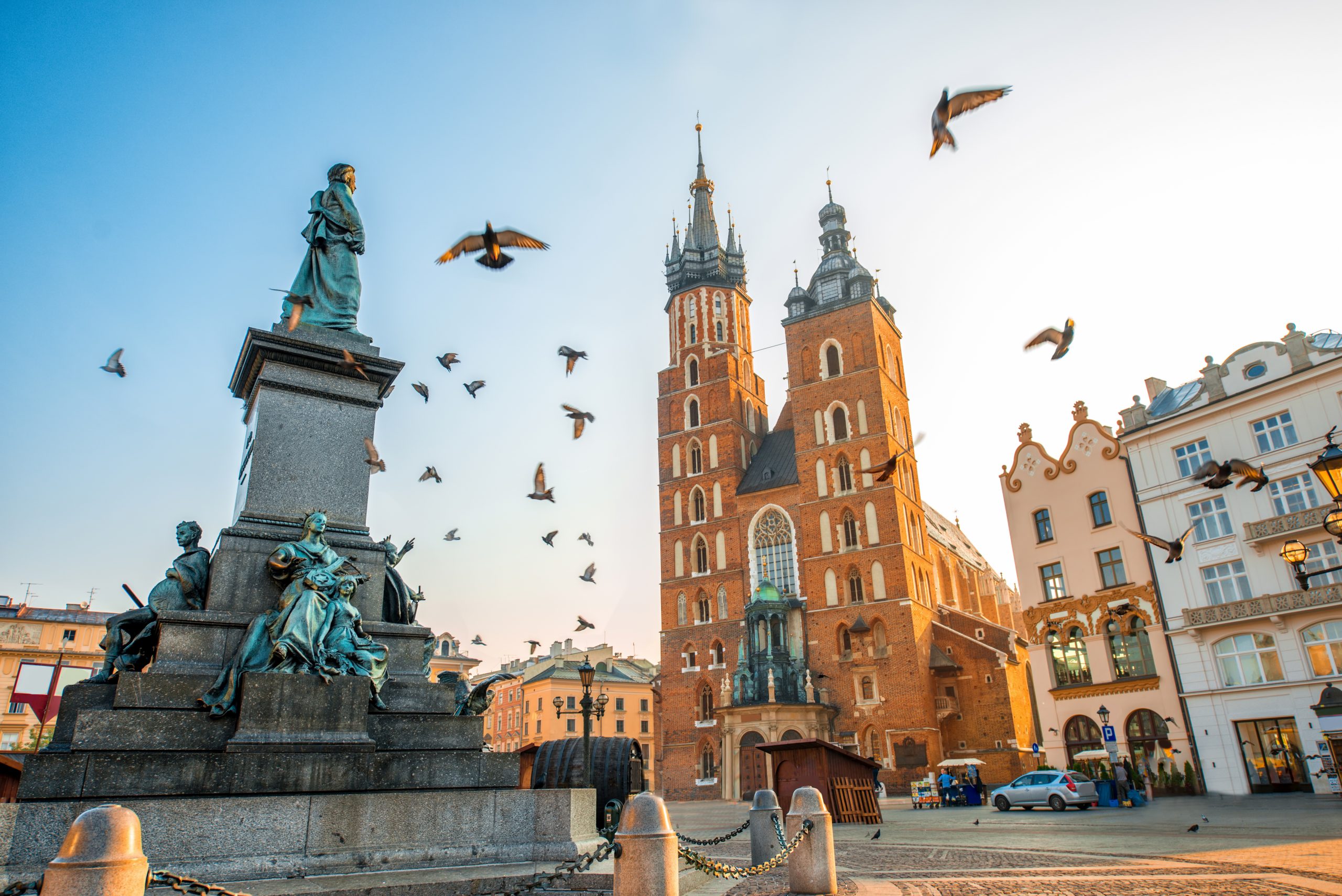
Poland’s tech hubs that are driving business innovation and growth
Discover how Warsaw and Krakow are driving business growth in Poland. Learn about their innovative tech scenes and opportunities for expansion.
Dec / 2024
How Poland’s stable economy lets businesses thrive
Poland’s resilient economy and pro-business policies make it an ideal destination for businesses looking to grow.
Dec / 2024WorldFirst articles cover strategies to mitigate risk, the latest FX insights, steps towards global expansion and key industry trends. Choose a category, product or service below to find out more.
- Almost 1,000,000 businesses have sent USD$300B around the world with WorldFirst and its partner brands since 2004
- Your money is safeguarded with leading financial institutions
